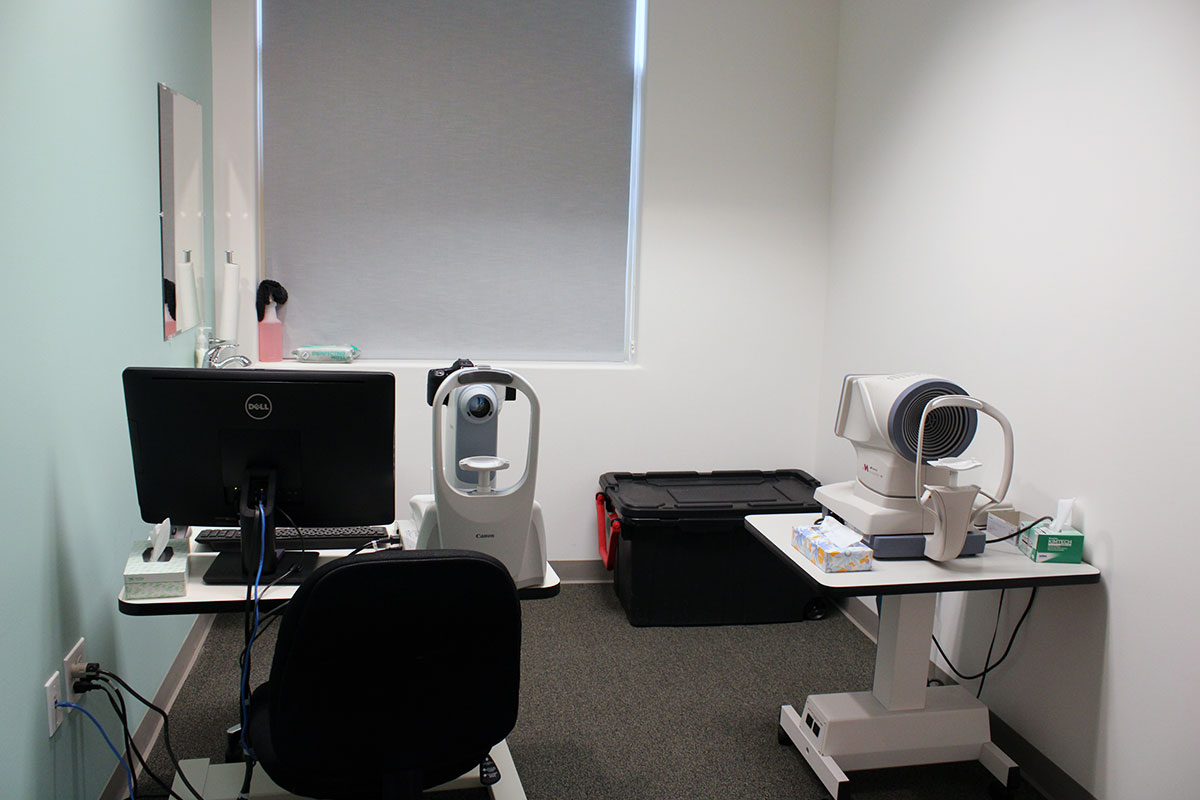Latest In Diagnostic Technology
Corneal Mapping
Call Us
Hours
Location

Schedule An Appointment
Corneal mapping, also known as corneal topography, measures the curvature and shape of the cornea, the clear outer layer of the eye. This diagnostic procedure uses computerized technology to produce a three-dimensional map of the cornea’s surface, allowing eye doctors to diagnose and treat eye conditions more effectively. The cornea bends light to help the eye focus, and any irregularities in its shape can cause vision problems such as astigmatism, nearsightedness, and farsightedness.
Aladdin Biometer with Corneal Topography
At the Eyecare Center of Ken Caryl in Littleton, we are proud to offer the latest eye care technology, including the Aladdin Biometer with Corneal Topography. The Aladdin Biometer with Corneal Topography combines several tests into one streamlined exam, making it a convenient and efficient option for patients. This device measures corneal shape and thickness as well as axial length and anterior chamber depth quickly and painlessly.
This information is crucial for diagnosing and managing conditions such as cataracts, glaucoma, and refractive errors like myopia, hyperopia, and astigmatism. It also allows us to track changes over time and assess treatment effectiveness.
What is corneal topography used for?
Corneal mapping is a useful tool for a variety of eye care applications:
- Myopia management – Measuring axial length allows us to track nearsightedness progression in children and adults, helping guide effective treatment plans. Longer axial length is associated with a higher risk of serious eye conditions later in life, such as retinal detachment, glaucoma, and myopic maculopathy. Monitoring axial length helps identify patients at higher risk and demonstrates the effectiveness of myopia management.
- Contact lens fitting – Corneal maps also help us select contact lenses that provide the most comfortable and effective fit.
- Pre-operative evaluations for LASIK and other refractive surgeries – Eye care professionals commonly use corneal mapping during pre-operative evaluations for LASIK surgery and other refractive surgeries. The detailed data helps our optometrists determine if you are an ideal candidate for refractive eye surgery.
- Corneal disease management – It also plays a key role in diagnosing and managing corneal diseases like keratoconus. The 3D map allows us to track disease progression and create targeted treatment plans.
What to expect when getting a corneal topography scan
A corneal topography scan is quick, non-invasive, and painless. Nothing touches your eyes at any time. You will sit in front of the device and focus on a target while it captures images, and the scan only takes a few seconds to complete.
The scan works by projecting light onto your cornea and capturing its reflection with a specialized camera. Advanced software then creates a detailed 3D map showing the curvature and shape of your cornea, highlighting any irregularities.
If your doctor recommends corneal mapping, they’ll review your digital corneal map with you during your comprehensive eye exam at the Eyecare Center of Ken Caryl. For more information or to schedule an appointment, contact us today!
